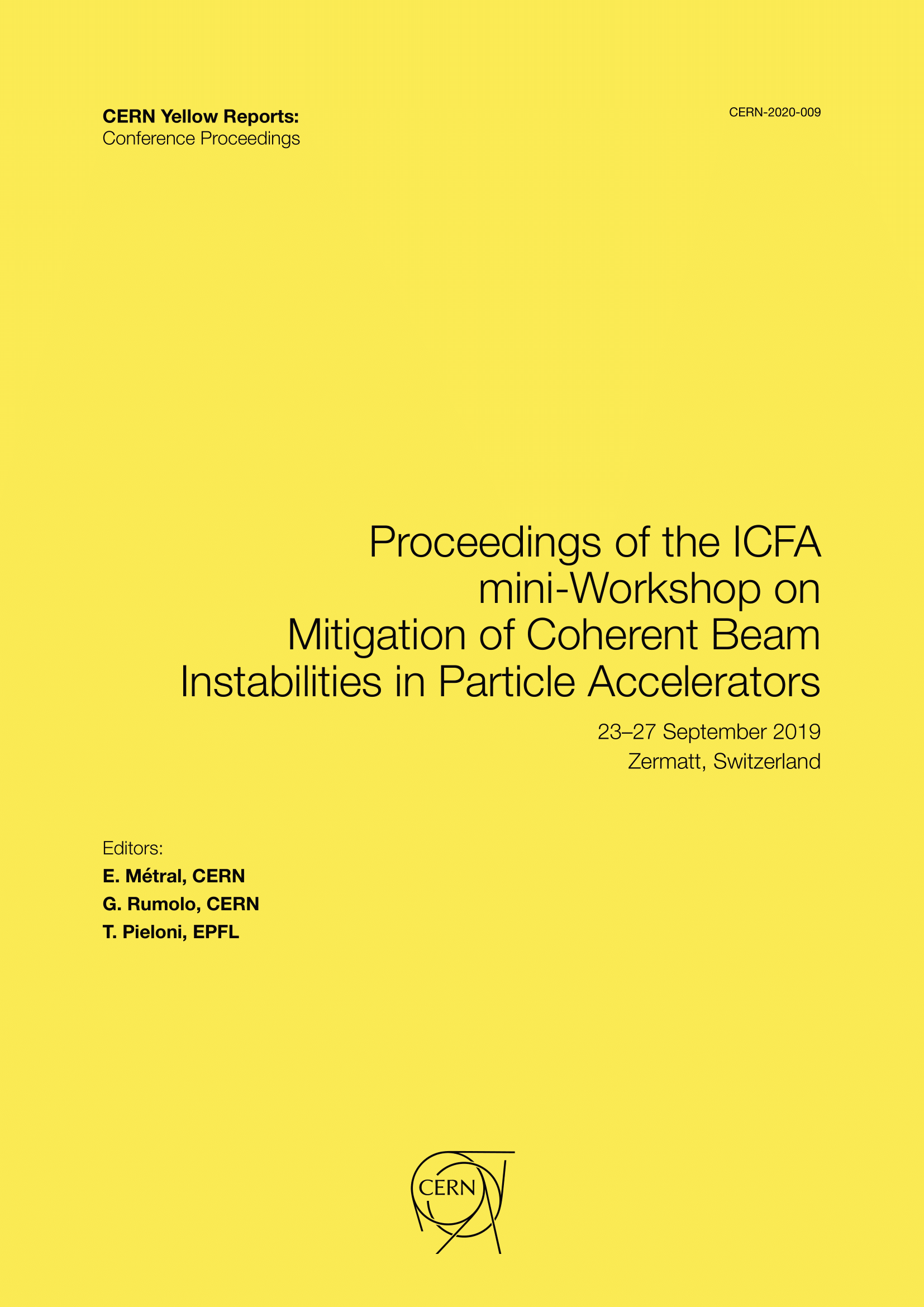Advanced Landau damping with radio-frequency quadrupoles or nonlinear chromaticity
DOI:
https://doi.org/10.23732/CYRCP-2020-009.60Abstract
Landau damping is a powerful mechanism to suppress impedance-driven coherent instabilities in circular accelerators. In the transverse planes it is usually introduced by means of magnetic octupoles. We will discuss a method to generate the required incoherent betatron frequency spread through detuning with the longitudinal rather than the transverse amplitudes. The approach is motivated mainly by the high-brightness, low transverse emittance beams in future colliders where detuning with the transverse amplitudes from magnetic octupoles becomes significantly less effective. Two equivalent methods are under study: a radio-frequency quadrupole cavity and the nonlinear chromaticity. The underlying beam dynamics mechanisms are explained based on a recently extended Vlasov theory and relevant results are discussed for dierent longitudinal beam distributions under specific approximations. Finally, the analytical studies are benchmarked against numerical simulations employing a circulant matrix and a macroparticle tracking model.
Downloads
Published
Issue
Section
License
Copyright (c) 2021 CERN

This work is licensed under a Creative Commons Attribution 4.0 International License.
Authors who publish with this publication agree to the following terms:
- CERN retains copyright and publishes the work licensed under the Creative Commons Attribution License 4.0 that allows others to share the work with an acknowledgement of the work's authorship and initial publication in this series.
- Authors are able to enter into separate, additional contractual arrangements for distribution of the published version of the work (e.g., post it to an institutional repository or publish it in a book), with an acknowledgement of its initial publication in this series.
- Authors are permitted and encouraged to post their work online (e.g., in institutional repositories or on their website) prior to and during the submission process, as it can lead to productive exchanges, as well as earlier and greater citation of published work (See The Effect of Open Access).

